Our latest research, Adapting to the COVID-19 Environment, assesses the capacity of the Seattle/King County workforce system to support those in the most vulnerable position during the crisis and its aftermath to re-enter the labor market. This second brief in the COVID-Recession & Recovery series offers some guidance for how organizations and the system can successfully respond to the COVID-19 unemployment crisis.
The COVID-Recession & Recovery series is done by SJI on behalf of the City of Seattle’s Office of Economic Development to inform the City strategies as it collaborates with the Workforce Development Council to plan our regional recovery from this unprecedented economic shutdown and recession. To read brief one, click here.
Coming soon, we will be publishing the third and fourth part of the series. In brief three, we will be identifying programs that have made the pivot to the COVID-19 environment and can be scaled up or replicated. We will focus on programs in pathways with occupations that have not been hard hit by layoffs or have the potential to recover quickly as well as training and support programs that are successfully navigating the digital divide.
In brief four, we will identify skill sets from occupations that are in demand or recovering and what skills from hard-hit occupations can be crosswalked into those occupations to inform targeting and support to help job seekers build on their strengths as they transition to new career paths.
Get more insights from the SJI Research & Policy Team! Learn more about our areas of focus and read the latest reports:

Recent Comments